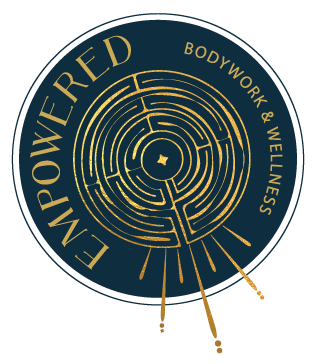You know the drill. You come in for your massage. We get you checked in and you might get asked to sit in our Relaxation Room. Then your massage therapist comes to get you and shows you to your room. Depending on if it is your first time or maybe your thirtieth time visiting, we may ask a number of questions. How you are feeling, any areas you would like focused and many others. As we are listening to you describe what is going on, we are formulating a plan on what we will be working on during your time with us. Over the last few weeks, a muscle that has be a popular one to work on is the Psoas.
What is the Psoas?

There is a psoas major and psoas minor. The one we are talking about is psoas major. It is a deep core muscle that begins at the lumbar vertebrae (your low back) and wraps through the hip attaching to the femur (the upper, inner thigh).
Psoas functions include:
- Flexing the hip joint (lifting your knee or bending over)
- Stabilizing the lumbar spine
- Assisting with posture and balance
Why the Psoas Matters
While writing this post, I read that the psoas is often referred to as the “muscle of the soul” because of its deep connection to our fight-or-flight response (another post for another day). Stress from daily repetitive movements can cause it to contract and tighten, which is why so many people experience persistent lower back or hip discomfort without a clear cause.
Common issues we see with a tight psoas include:
- Lower back pain
- Hip pain or tightness
- Pelvic tilt and posture imbalances
- Difficulty standing fully upright
- Referred pain to the thighs or knees
Our Approach
Working with the psoas requires skill, sensitivity and confidence. Now, I need you to listen to me. I'm not going to sugar coat this. The psoas is a beast! It can be very uncomfortable and no fun to have worked. But believe me! You will feel so much relief from having it worked. Unlike the quads or hamstrings that are superficial muscles, the psoas is tucked deep within the abdomen, near vital organs, vertebrae and delicate tissues. This is why it can be uncomfortable and not for everyone. If you have certain medical conditions, this isn't going to be for you.
Here are a few principles I follow when addressing psoas-related tension:
- Assessment First: I listen to what you are saying during intake, look for signs of imbalance, such as pelvic tilt, uneven hips, and patterns of compensation or tension in surrounding muscles in the low back, glutes or thigh.
- Indirect Release Techniques: Before diving into the deep work, I like to warm up the surrounding tissue by using our myofascial back scrub. This helps release fascia and brings fresh blood flow to the area. By supporting the surrounding tissues, it encourages the psoas to begin releasing.
- Client Communication: Your feedback is vital when working this muscle. Because psoas work can feel intense, I like to make sure you understand why I would like to work your psoas, have your consent, explain the steps, remind you to breathe and check in with you while working it.
- Holistic Approach: I'm sure you realize by now, the psoas doesn’t work alone. Everything is connected. So I make sure to combine psoas-focused work with the hips, low back, and diaphragm release techniques to support addressing your body as a whole.
Tips for Clients
I love to empower my clients with self-care strategies. Here are some simple stretches to support your psoas:
- Kneeling Lunge: Kneel on one knee, placing the front foot forward at a 90-degree angle. Keep your back straight, engaging your core. Tilt your pelvis forward to feel the stretch in the front of your hip. Hold for 30 seconds to 1 minute. Repeat on the other side
- Knee-to-Chest: Lie on your back with both knees bent. Pull one knee towards your chest, keeping your other foot on the ground. Hold for 20-30 seconds. Repeat with the other knee
- Camel Pose: Begin in a kneeling position, with your hands on your hips. Lean backward, keeping your back straight and engage your core. Hold for 20-30 seconds. Repeat several times
- Hip Flexor Stretch: Lie on your back with both knees bent. Lift one leg straight up, keeping your other foot flat on the floor. Hold for 30 seconds. Repeat with the other leg
Final Thoughts
Here we are at the end. You have learned the psoas may be hidden deep within the body, but its impact is profound. Whether you are experiencing lower back pain, tight hips, or general postural issues, listening to the psoas—and treating it with care and respect—can unlock deep patterns of tension and restore balance from the inside out.
You may be saying, "But Becky. You didn't explain why you call it the longest muscle in the body. It's not the longest muscle in the body." Well, thats because one of it's dearest friends is called Sartorius and I tend to work those together. And the Sartorius my friends, IS the longest muscle in the body. We will get into the Sartorius another day though.
If you’ve never explored the role of your psoas before, consider bringing it up in your next session—it might be the missing link to greater comfort and freedom in your body!
Wishing you rest and renewal, Becky

